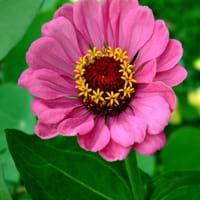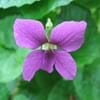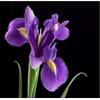Color
Orange, Purple, Red, White, Yellow
Pink, Purple, Red, White, Yellow
Color Meaning
Orange - Satisfaction and Passion, Pink - Sensitivity and Love, Purple - Elegance and Pride, Red - Courage, Desire and Love, White - Purity and Innocence, Yellow - Happiness and Friendship
Pink - Sensitivity and Love, Purple - Elegance and Pride, Red - Courage, Desire and Love, White - Purity and Innocence, Yellow - Happiness and Friendship
Line
Not Available
Not Available
Silhouette
Not Available
Not Available
Blossom Texture
Not Available
Not Available
Form
Not Available
Not Available
Sunlight
Full Sun
Full Sun
Watering
Diligently
Enough
Type of Soil
Loamy
Loamy, Sandy
Essential Fertilizers
Lime stone, Sulphur
Lime stone
Common Pests and Diseases
List of Pests
Aphids, Japanese beetles
Aphids, Mites, Thrips, Whiteflies
List of Diseases
Black Spot, Powdery Mildew
Alternia Leaf Spot, Bacterial leaf spot or blast, blight, Powdery Mildew
Bloom Time
All Summer Season, Fall Season, Spring Season
All Summer Season, Fall Season
Origin
Africa, Asia, Europe, North America
Mexico
Interesting Facts of
- The Rose comes in various colors, although a "black rose " is not literally black but a dark red.
- A single rose suggests utmost devotion while two rose entwined together says "Marry me".
- Zinnia is derived from German botanist Johann Gottfried Zinn's name and is the state flower of USA(Indiana).
- Spanish call it mal de ojos which means sickness of the eye.
Lifespan
Perennials - a plant that lives for three or more years
Annuals - complete its full life cycle in one growing season
Uses
Not Available
Not Available
Health Benefits
Best remedy for Cough & Cold, Good remedy for Diarrhea, Prevents Intestinal Ulcers, Reduces Haemorrhages, Treats Rickets
Cures Constipation
Medicinal Uses
Acts as an anti-inflammatory, Rejuvenates body and skin
Acts as an Astringent, Natural Healer
Culinary Uses
Rich in Vitamins, Used in jam, jelly, marmalade
Salads, Teas
Cosmetic Uses
Best for Healing, Lightens the skin, Used in Perfumes
Used in Perfumes, Used in shampoos and soaps
Occasional Uses
Anniversary, Birth Day, Christmas, Congratulations, Father's Day, Friendship Day, Funerals, Mother's Day, Sympathy, Thank You, Valentine's Day, Wedding
Thanksgiving Day, Wedding
Allergy
Asthma, Conjunctivitis, Itching, Red eyes, Runny nose, Sneezing
Asthma, Contact Dermatitis, Itching
Scientific Name
Rosa
Zinnia Elegans
Sub kingdom
Tracheobionta
Tracheobionta
Super Division
Spermatophyta
Spermatophyte
Division
Magnoliophyta
Magnoliophyta
Class
Magnoliopsida
Magnoliopsida
Family
Rosaceae
Asteraceae
Sub Family
Rosoideae
Asteroideae
Genus
Not Available
Not Available
Number of Species
Not Available
Not Available
More about Rose and Zinnia Facts and color
You must be curious to know more about Rose and Zinnia facts and color. flowers.comparespecies.com will let you know all the Interesting Facts about Rose and Zinnia. Rose comes in Orange, Purple, Red, White, Yellow colors whereas Zinnia flowers are with Pink, Purple, Red, White, Yellow colors. Other Rose and Zinnia facts will definitely amuse you.
Rose and Zinnia growing conditions
Absolute growing condition is the only key to keep plants in good health and in good shape. Let’s learn about essential Rose and Zinnia growing conditions. Rose requires Full Sun and Diligently watering with 6.50 of Loamy soil. Zinnia needs Full Sun and Enough watering with 5.50 of Loamy, Sandy soil. Get other Rose and Zinnia facts in the sections below.
Rose and Zinnia Facts
Want to know about Rose and Zinnia facts? Get all the Rose and Zinnia facts here.
Rose and Zinnia Classification
After knowing about various Rose and Zinnia facts, let's study their classification. Based on genetic and physical features, Rose and Zinnia classification starts with knowing their scientific name. The scientific name of Rose and Zinnia is Rosa and Zinnia Elegans respectively. Rose belongs to Rosaceae family whereas Zinnia falls under Asteraceae family. Also check out Flowers by Color so as to plant colorful aroma in the garden.





